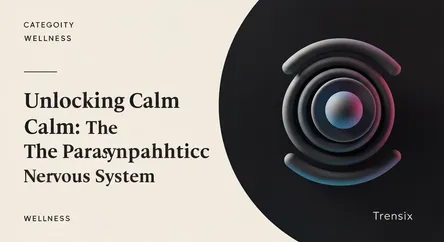Wellness
Unlocking Calm: The Parasympathetic Nervous System

Discover your body's "rest and digest" mode and how activating the parasympathetic nervous system is key for managing stress and boosting wellness.
What is it?
The parasympathetic nervous system (PSNS) is a division of your body's autonomic nervous system, which controls involuntary functions. Often called the "rest and digest" system, it acts as a counterbalance to the sympathetic nervous system's "fight or flight" response. When you are in a state of calm, the PSNS is dominant, slowing your heart rate, lowering blood pressure, and stimulating digestion and other metabolic processes. Essentially, its primary role is to conserve energy and return the body to a state of homeostasis or balance after a period of stress.
Why is it trending?
In a world of chronic stress and constant stimulation, wellness and mindfulness practices have become essential for many. The focus on the parasympathetic nervous system is trending because it provides a physiological explanation for the benefits of these practices. Understanding that activities like meditation, deep breathing, and yoga directly activate this calming neural network empowers people to take control of their stress response. It shifts the conversation from abstract relaxation to tangible, biological self-regulation, making it a cornerstone of modern mental and physical health strategies.
How does it affect people?
Activating the parasympathetic nervous system has profound effects on well-being. It helps counteract the negative impacts of chronic stress, reducing the risk of conditions like heart disease and improving gut health. People can learn to consciously stimulate this system through simple techniques. Mindful practices such as slow, deep breathing, meditation, gentle yoga, or even spending time in nature can shift the body into a parasympathetic state. This leads to reduced anxiety, better sleep, improved digestion, and an overall greater sense of calm and resilience in daily life.